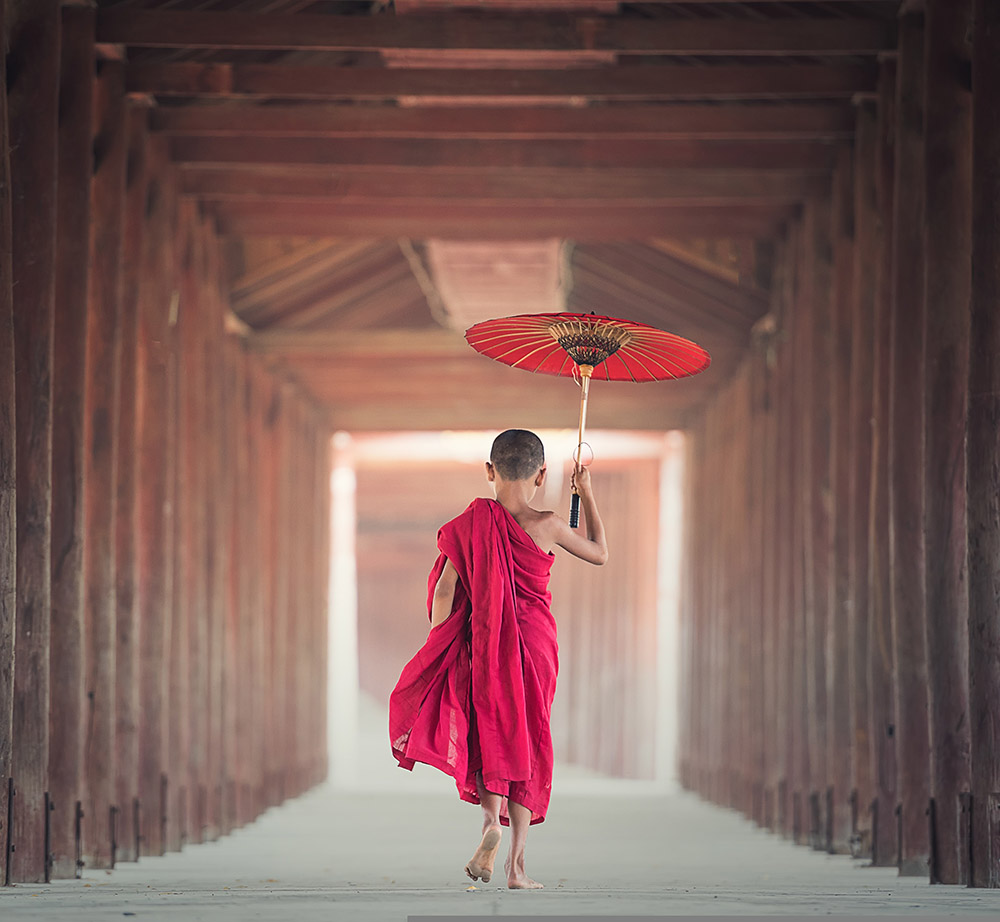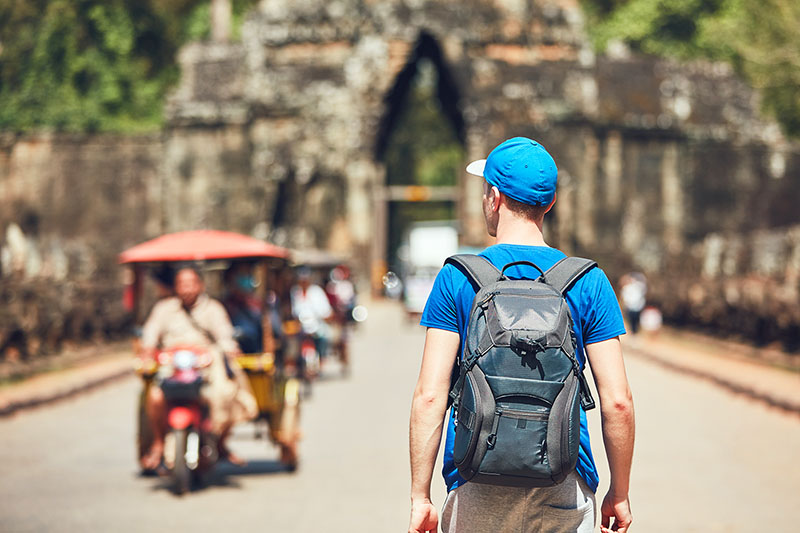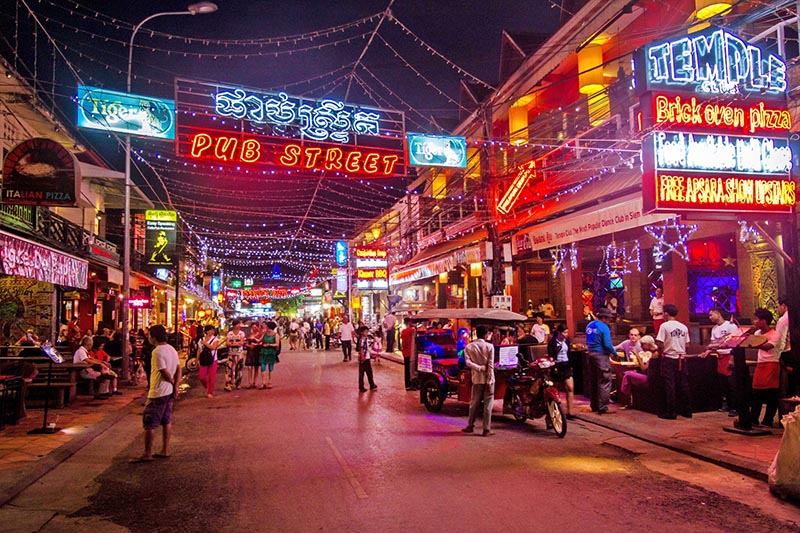Angkor Wat Temple Overview
The Angkor Wat temples are exceptionally well-maintained and provide a window into the history of the Khmer Empire, which governed Cambodia between the 9th and 15th centuries. These temples are also visually magnificent, showcasing intricate carvings and towering spires.
The name "Angkor Wat" is Khmer, the official language of Cambodia. It literally means "City Temple" or "Temple City".
Angkor Wat Location
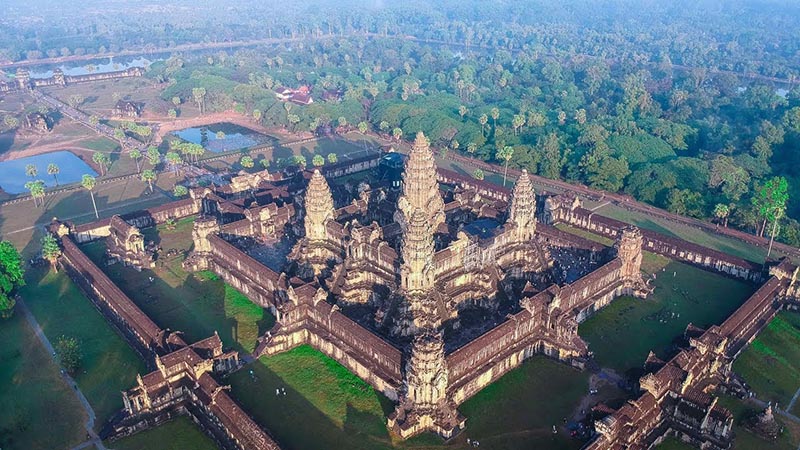
Angkor Wat from above
Angkor Wat temple is located in Siem Reap Province, Northwestern Cambodia, in the jungle-shrouded archeological site of Angkor. It is 5.5 kilometers (3.4 miles) North of the city of Siem Reap, the capital of the province nicknamed the "gateway to Angkor".
The Angkor archaeological site is a significant and expansive archaeological site in Southeast Asia. Covering a vast area of more than 400 square kilometers, it is home to over 1,000 temples and various other structures. Among these, Angkor Wat stands out as the largest and most renowned temple complex within the Angkor archaeological site.
Background history
The iconic Angkor Wat, constructed in the 12th century, was commissioned by King Suryavarman II as a Hindu temple honoring the deity Vishnu. It was built in Yaśodharapura, the capital city of the Khmer Empire. The impressive temple complex took approximately 30 years to complete, with construction spanning from 1113 to 1150. Today, Angkor Wat is renowned as a remarkable example of Khmer architecture.
It was later converted into a Buddhist temple in the 15th century. Angkor Wat was abandoned for centuries following the fall of the Khmer Empire in the early 16th century. The temple was not rediscovered by the Western world until the early 19th century, when it was visited by a French explorer named Henri Mouhot. Mouhot's writings about Angkor Wat helped to spark renewed interest in the temple complex, and it has since become a major tourist destination.
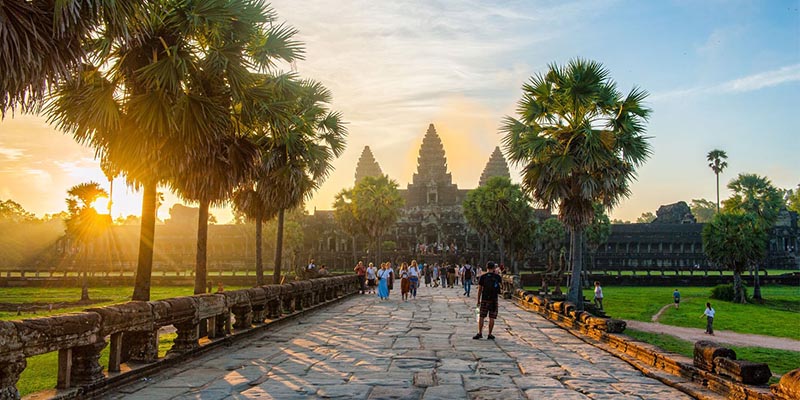
Sunrise scene in Angkor Wat Temple
The Angkor Wat temple complex in Cambodia has been recognized as a UNESCO World Heritage site and has now become one of the most sought-after tourist spots in the country. Renowned as one of the largest religious monuments globally, Angkor Wat holds great significance for Cambodia. It is even depicted on the national flag and remains a prominent symbol of the country's heritage.
Opening hours
The opening hours of Angkor Wat are from 5:00 AM to 5:30 PM, daily. It should be noted that Angkor Wat remains closed on Cambodian public holidays.
Angkor Wat Ticket & Entrance Fee
Types of tickets to Angkor Wat: There are three types of tickets available for visiting Angkor Wat:
-
1-day pass: This pass costs $37 and is valid for entry to the Angkor Archaeological Park within a period of 24 hours.
-
3-day pass: This pass costs $62 and is valid within three days to the Angkor Archaeological Park in a span of ten non-consecutive time periods.
-
7-day pass: This pass costs US $72 and is valid within seven days to the Angkor Archaeological Park in a span of 30 non-consecutive time periods.
Discount: Children under 12 years old enter Angkor for free. Foreigners holding a 2-year Cambodian residence visa are eligible for special pricing.
The Cambodian government has announced that for every ticket sold, an additional $2 will be donated to the Kantha Bopha Charity Fund, a Swiss children's hospital that provides free medical treatment.

1 Day ticket to visit Angkor Wat
Where to buy tickets: You have the option to purchase your tickets either at the ticket office or online. The official ticket center is situated 4 km away from Siem Reap town. It operates from 5:00 am to 5:30 pm daily. Another convenient option is to buy your tickets online through the Angkor Ticket website.
You will need to take a picture of your face to paste on your ticket to Angkor Wat. Remember to keep your ticket safe, especially when purchasing it for a long visiting period.
Payment methods: Tickets can be paid in cash (US Dollars, Cambodian Riel, Thai Bath, Euro) or by credit card (Discover, Visa, Mastercard, Union Pay, JCB, Diners Club).
Validity of tickets: Tickets are valid from the date of purchase.
Highlights of Angkor Wat
Let's take a look at what Angkor Wat Temple has to offer for you to explore:
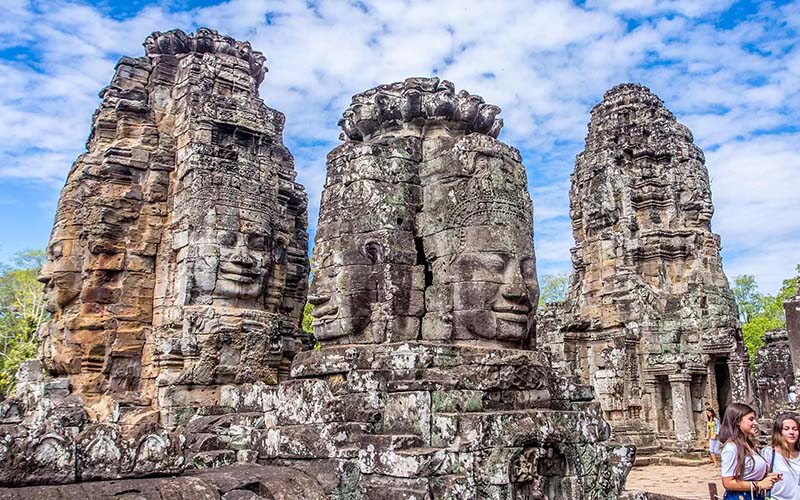
Angkor Wat intricate architecture
Angkor Wat style of architecture: The temple is built in the Khmer architectural style, which was developed in the 9th century by the Khmer Empire. The Khmer architectural style is characterized by its use of sandstone, its intricate carvings, and its symmetrical design.
Angkor Wat temple scale: Angkor Wat is the largest religious monument in the world. The temple covers an area of 162.6 hectares (402 acres), which is about the size of 300 football fields. It is estimated that it took over 300,000 workers and over 30 years to build the temple. There is no historical record of who designed the temple, and the name of the architect has been lost to time.
The symbolism of the temple: The temple of Angkor Wat has a dedicated purpose to honor the Hindu deity Vishnu. Its design is intricately crafted to resemble Mount Meru, which is a legendary abode of gods in Hindu cosmology. This implies that the architect of Angkor Wat possessed extensive knowledge of Hindu mythology and its symbolic representations.
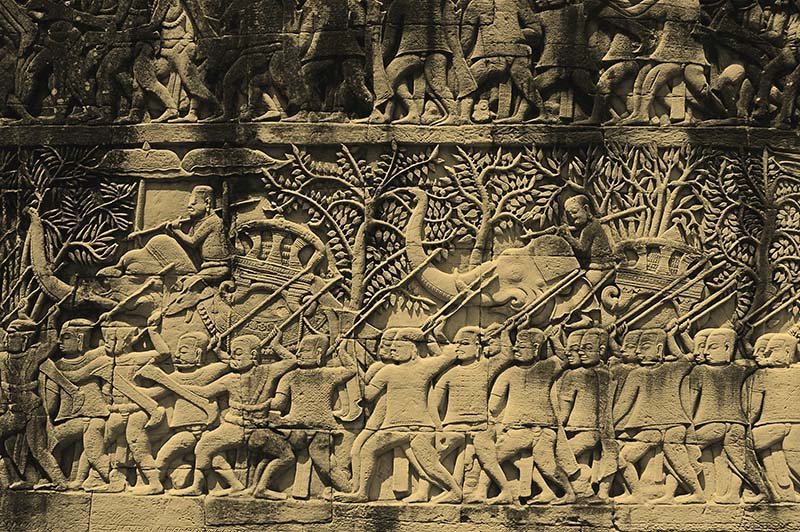
Angkor Wat bas-reliefs describe parts of ancient Khmer people
The Angkor Wat bas-reliefs: The bas-reliefs that adorn the walls of Angkor Wat are some of the most impressive in the world. They depict scenes from Hindu mythology, as well as from everyday life in the Khmer Empire.
The sunrise and sunset over Angkor Wat: The sunrise and sunset over Angkor Wat are two of the most beautiful sights in the world. The temple is perfectly positioned to frame the sunrise and sunset, and the resulting images are truly breathtaking.
Best time to visit Angkor Wat Temple
The best time to visit Angkor Wat depends on your personal preferences. Here are some factors that you might consider:
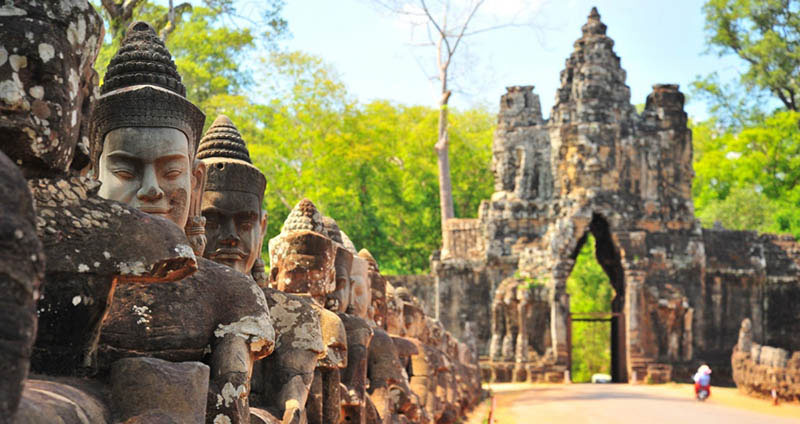
Best time to visit Angkor Wat temple
Weather: The weather in Siem Reap, where Angkor Wat is located, is hot and humid year-round. The dry season runs from November to April, while the wet season runs from May to October. If you want to avoid the heat and humidity, the dry season (from November to April) is the best time to visit.
On the other hand, the wet season presents an opportunity for a pleasant visit as there are fewer tourists, and the temples are flourishing with verdant foliage. Nevertheless, it is essential to note that certain temples within the Angkor archaeological site might be inaccessible during this period due to flooding. This might impact your itinerary if you plan to explore other temples in Angkor.
Festivals: There are a number of festivals held at Angkor Wat throughout the year. One of the most popular festivals in Angkor is the Angkor Sangkran, which is normally held on April 13 - 16 with water splashing activities and traditional games.
Expand your knowledge with our post about travel guide to Cambodia!
How to get to Angkor Wat Cambodia
To get to Angkor Wat, you need to go to the "gateway to Angkor," which is Siem Reap town. To reach Siem Reap, you can travel:
By plane: Siem Reap International Airport serves as the nearest airport to Angkor Wat. Direct flights to Siem Reap are available from major cities in Asia, including Bangkok, Ho Chi Minh City, and Singapore.
By bus: If Siem Reap is not your first destination when visiting Cambodia, you can use buses to travel from neighboring cities to reach the city. The bus ticket price from Phnom Penh to Siem Reap varies. However, you can expect to pay around $10-20 for a one-way ticket.
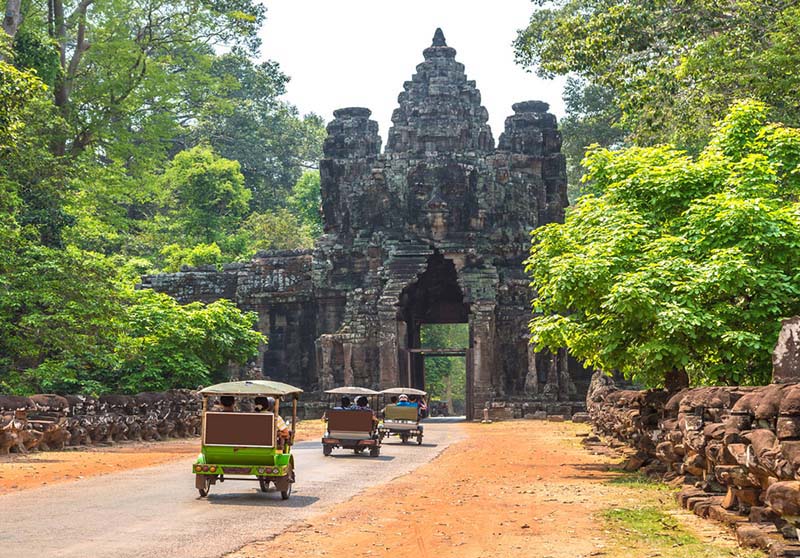
You can easy to find many tuk tuk near Angkor Wat
Once you arrive in Siem Reap, you can take a tuk-tuk or taxi to Angkor Wat. The temple complex is located about 6 kilometers (3.7 miles) from the city center. You can expect to pay around $10-15 for a one-way trip by tuk-tuk or $15-20 for a one-way trip by taxi.
Hotels nearby Angkor Wat
Jaya House River Park: This is a small boutique hotel located by the Siem Reap River with a lush and pleasant ambiance. The staff at Jaya House River Park are consistently praised for their friendly and helpful attitude.
-
Location: River Rd, Krong Siem Reap, 6 minutes by tuk-tuk to Angkor Wat (6 km from Angkor Wat).
-
Room rate: From $225.
Golden Temple Residence: The hotel has a traditional Khmer style, with beautifully decorated rooms and public areas. The hotel also has a large swimming pool and a rooftop terrace with stunning views of the city. It is also close to a number of restaurants, bars, and shops.
-
Location: Sok San Rd, Krong Siem Reap 17252 (8 km from Angkor Wat Temple).
-
Room rate: From $138.
Central Suite Residence: The hotel has a modern style, with spacious and well-appointed rooms. The hotel staff is also very friendly and helpful. The hotel is near the city center, easily accessible to bars, restaurants, and shops while also maintaining a peaceful and serene atmosphere.
-
Location: Sok San Rd, Krong Siem Reap 17252 (7 km from Angkor Wat Temple).
-
Room rate: From $59.
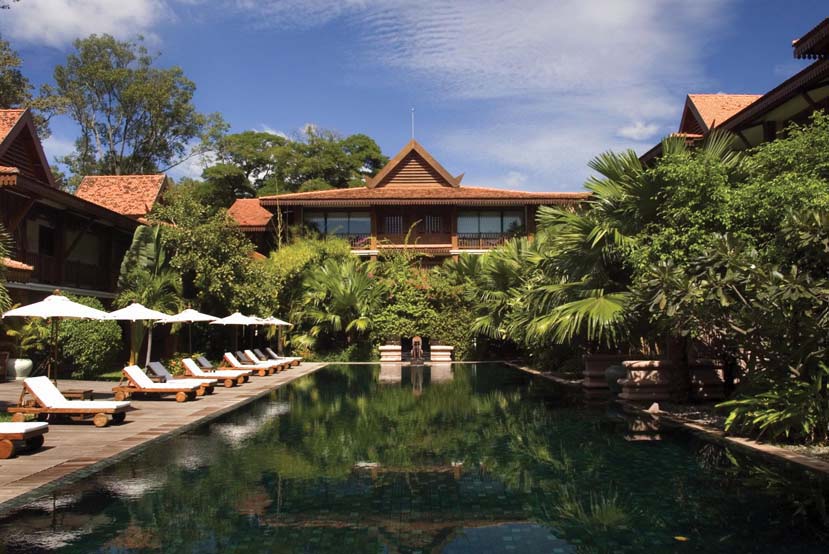
Convenient hotels near Angkor Wat
Golden Temple Hotel: The hotel is also highly rated for its excellent service, comfortable rooms, and convenient location. Golden Temple has colorful decor blended with high-quality furnishings and cultural artwork and design, and provides excellent amenities along with service.
-
Location: Siem Reap Angkor High School Road (8 km from Angkor Wat Temple)
-
Room rate: From $58.
Tips for visitors to Angkor Wat
Angkor Wat is a large temple complex, to optimize your trip, here are some tips from us:
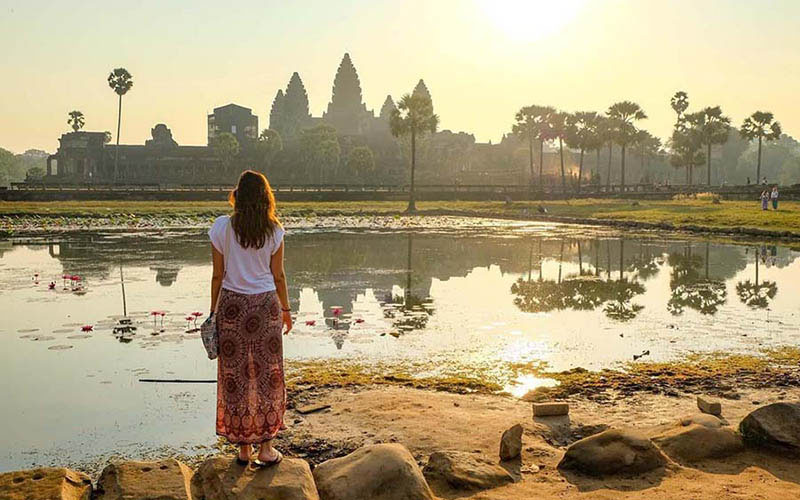
Useful tips to know before visit Angkor Wat
-
Arrive early: The Angkor Archaeological Park opens at 5:00 am, and if you are up for it, you can catch the sunrise over Angkor Wat. This is a popular time to visit, but it is also the best way to avoid the crowds.
-
Dress appropriately: Angkor Wat is a sacred site, so it is important to dress appropriately as instructed. This means covering your shoulders and knees.
-
Bring water and snacks: It can be hot and humid in Siem Reap, so it is important to bring water and snacks with you to maintain health and energy.
-
It is essential to wear comfortable footwear when visiting Angkor Wat due to the amount of walking involved.
-
Take a break in the shade: If you start to feel tired, take a break in one of the many temples or gardens.
-
Be respectful: Angkor Wat is a sacred site, so it is important to be respectful of the temples and the people who live in the area. There are a few things you should take note of such as avoiding touching monks or sitting higher than them. You should also refrain from touching someone's head or sitting cross-legged; it is recommended to sit with your feet hidden.

Enjoy your trip to Angkor Wat
With its rich history, stunning architecture, and lush surroundings, Angkor Wat is a place that will leave you an impressive mark. If you are planning a trip to Cambodia, be sure to include Angkor Wat on your itinerary. And if you need any support from us for your Cambodia and Vietnam package tour, New Asia Tours is honored to assist.


